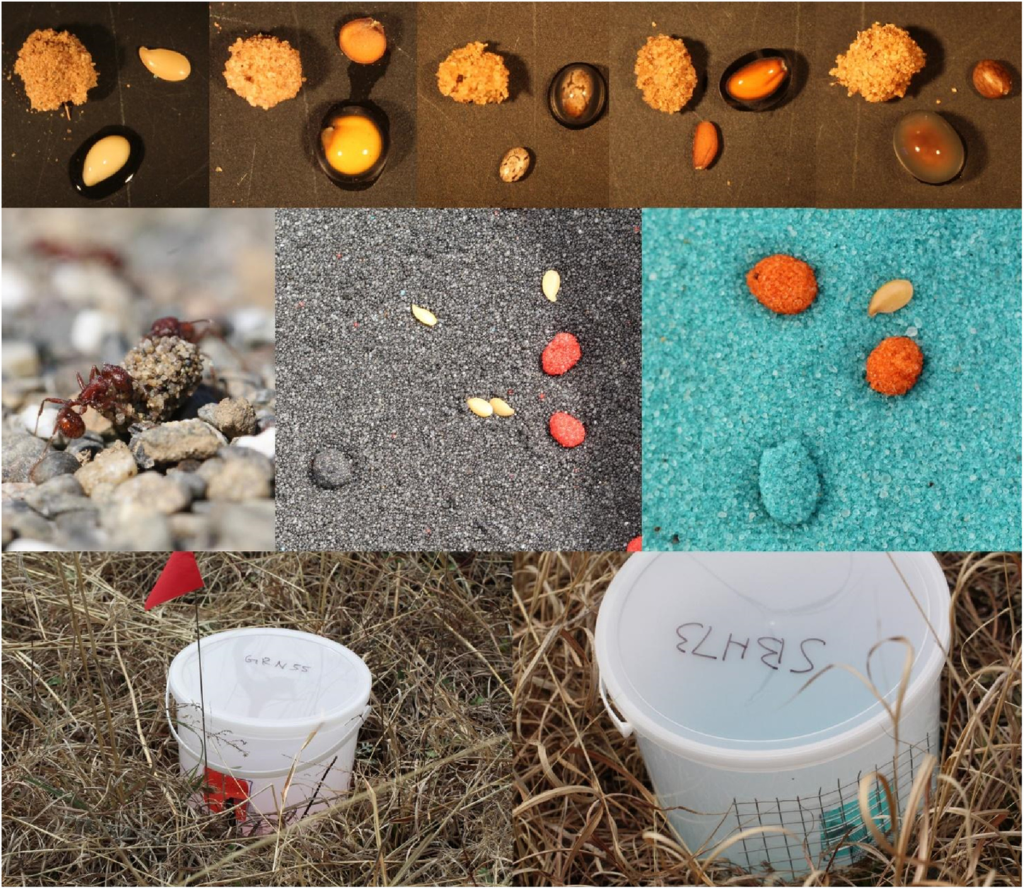The editor’s choice for our March issue is “Sandy seeds: Armour or invisibility cloak? Mucilage-bound sand physically protects seeds from rodents and invertebrates“ by Eric LoPresti et al. Here, Associate Editor Michał Bogdziewicz discusses the importance of this research:

Seeds are the fundamental units of plant reproduction, critical to the persistence and distribution of plant populations. Thus, seed predation can be a significant challenge, affecting the structure of plant communities and the potential for persistence under global change. In their paper, Eric F. LoPresti, Vincent S. Pan, Cecilia Girvin, Gabhriel Barber, Sierra Jaeger, and John L. Orrock discuss the importance of mucilage in protecting seeds from predation and its broader implications for plant defence strategies.
Mucilage is a sticky substance produced by many plants, consisting of a layer of polysaccharides, that becomes gelatinous when wet. It can provide significant benefits to a seed by reducing removal and decreasing seed predation in the presence of arthropods and rodents. The benefits of mucilage can last for a considerable time, providing protection from granivores for period when seeds are at risk. Mucilaginous seeds are found in a variety of different taxa and ecosystems, and the study by LoPresti et al. helps to explain why. Their elegant, long-term experiment demonstrated that a mucilage-bound sand coating greatly reduced the chance of removal in both rodent-accessible and rodent-excluded treatments. The effect of the sand coating presence, rather than the reduced apparency of matching the substrate, drove that reduction. The study offers two major expansions; unlike past studies, this protection is shown to be long-term, and extends beyond one consumer guild. These results provide a significant step forward in the literature, on what is likely a very common and important seed defense of thousands of plant species with mucilaginous seeds.
Glandular-sticky plants (which also entrap substrate) and mucilaginous seeds occur in thousands of plant species worldwide. Yet, investigations into the functional role of substrate entrapment on either seeds or aerial parts are limited to only a few studies, largely carried out in Mediterranean environments. It is worth noting that the relevant herbivores in each of these studies are not particularly visually oriented, suggesting that the sand coating may not be a crypsis mechanism. Rather, the authors hypothesize that there are four mechanisms potentially operating, the contributions of each being dependent on the seed consumer in question. These include physical limitation (increased mass of sand-covered seeds beyond consumer ability to exploit them), increased handling costs (consumers decreased ability to carry sand-covered seeds to caches), loss of value of the seed by adhered sand, and decreased digestibility of sand-covered seeds.
In conclusion, this study underscores the importance of seed mucilage as a trait that could explain a species’ ability to persist and expand in future settings where seed predation may be a limiting factor in establishment. The authors provide new insights into plant defense strategies and highlight the need for further research into the mechanisms that allow plants to protect their seeds from predators.